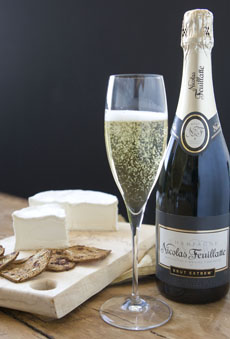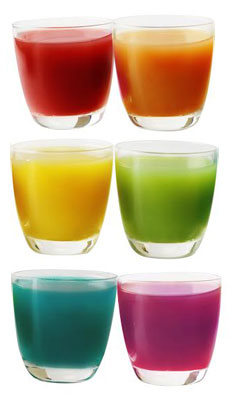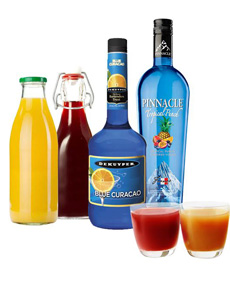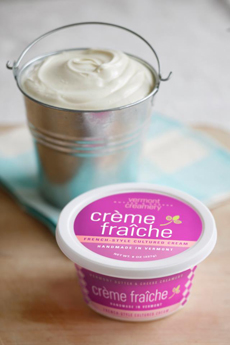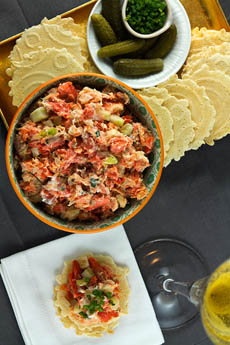|
5. POUR the batter into a 9-inch round pan and bake for 45–60 minutes. Check for doneness with a toothpick starting at 35 minutes. The toothpick inserted in the center of the cake should come out clean. Remove from oven and allow to cool completely on a wire rack. When the cake is completely cool, slice it in half to create two equal layers of cake.
6. PREPARE the crème fraîche filling by simply mixing the crème fraîche with the powdered sugar.
7. PLACE the bottom layer on the cake plate and spread 2/3 of the crème fraîche mixture on the bottom layer. Drizzle a bit of the caramel on top of the filling and place the top layer on top. Spread the rest of the crème fraîche on top of the cake. Sprinkle with chopped hazelnuts and drizzle the caramel all over the top of the cake.
8. SERVE immediately and store any leftover cake in the fridge, as the crème fraîche needs to be kept chilled.
WHAT IS CRÈME FRAÎCHE
Crème fraîche (pronounced crem fresh, French for “fresh cream”) is a thickened cream—not as thick as sour cream, more of the consistency of yogurt, which is an appropriate analogy because it is slightly soured with bacterial culture. Originally from Normandy, the dairy heartland of France, today it is used throughout Continental and American cuisines.
Sour cream, which is more accessible and less expensive, can be substituted in most recipes; but crème fraîche has advantages: It can be whipped, and it will not curdle when cooked over high heat. In addition, it is usually a bit lighter in body than commercial sour creams, more subtly sour, and overall more elegant.
Crème fraîche is made by inoculating unpasteurized heavy cream with Lactobacillus cultures, letting the bacteria grow until the cream is both soured and thick and then pasteurizing it to stop the process. Thus, authentic crème fraîche cannot be made at home because generally, only pasteurized cream is available to consumers. To add Lactobacillus to pasteurized cream will cause it to spoil instead of sour.
Crème fraîche is the ideal addition to sauces and soups because it can be boiled without curdling. Our favorite use is as a topping and garnish. Just a dab helps balance flavors and makes anything more delicious. Here’s more about crème fraîche plus a recipe to make your own.
|


